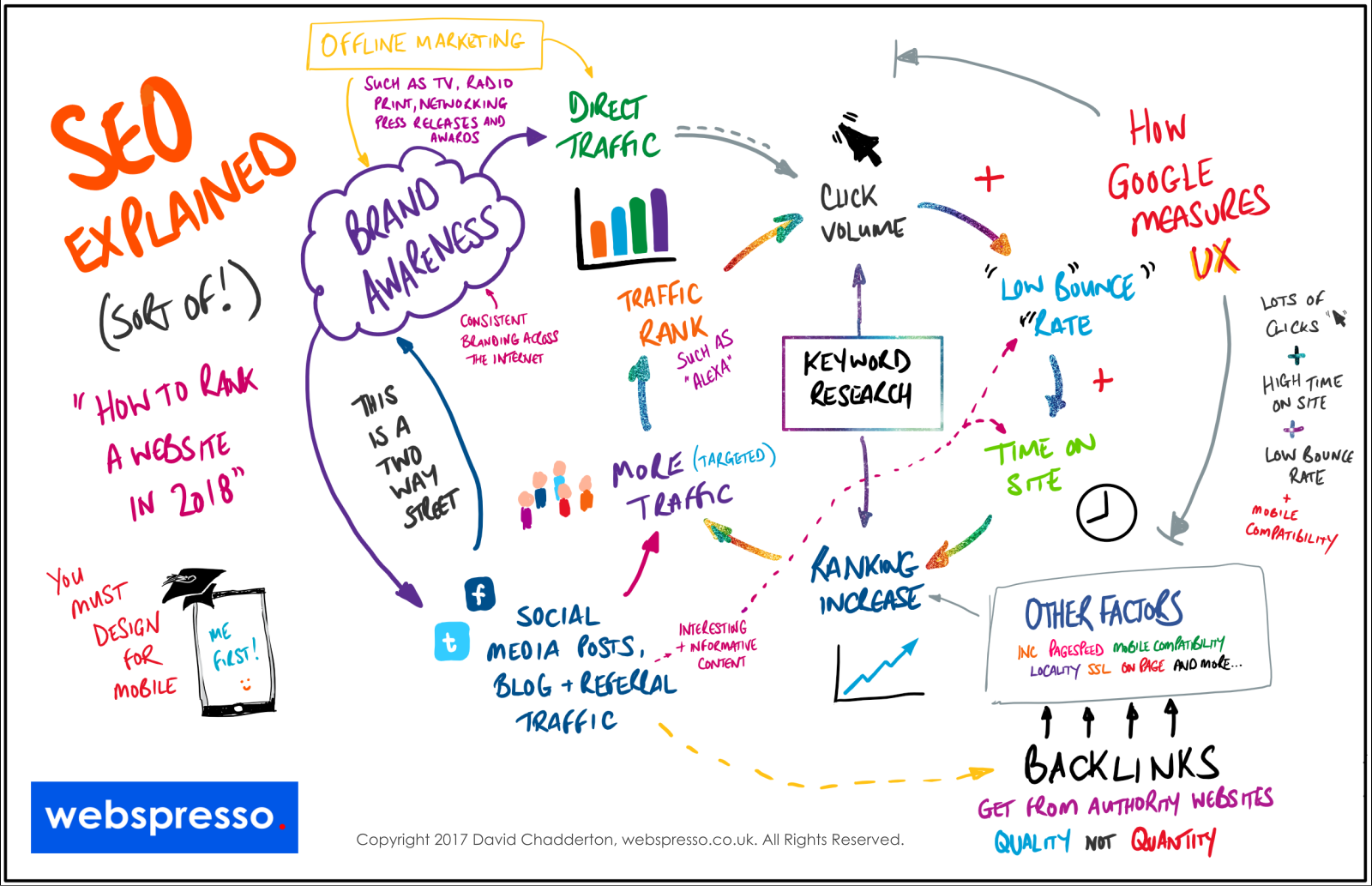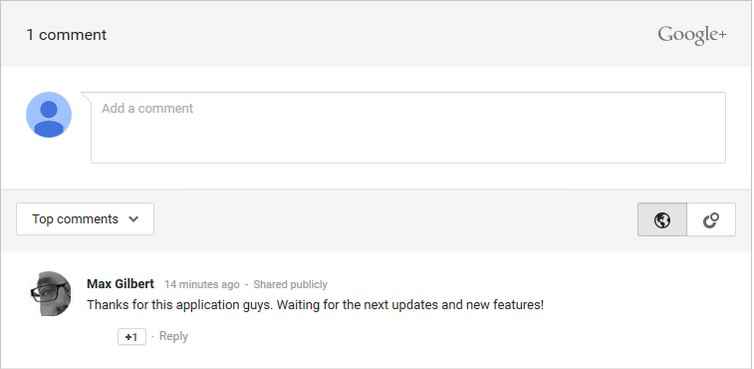

Search Engine Optimisation is a complex subject. There are many facets to an effective SEO campaign so it pays to understand how they all fit together and how one factor impacts another.
We produced this diagram for a client and it was retweeted by dozens of SEO professionals on Twitter, including the industry leaders, SEMRush.
Open up the diagram or print it off so you can get a better view. take a look at the factors you think you can affect and see how those factors influence other aspects of digital marketing. The essence of this is the premise that if you target the right keywords (phrases or words that people search when they need an answer, when they want to buy or when they want more information) then you will have taken the first step to driving 'profitable' traffic to your website. When you start to get traffic, brand awareness increases, which means you get more traffic and higher rankings, which in turn should convert into more traffic. Then, by targeting other keywords, you can ensure your traffic doesn't plateau - this process will in turn increase your brand awareness and your direct traffic, which means higher Google rankings.
This cyclical approach means that you should be able to grow your website, and more importantly, your business. Look for new and original ways to drive traffic to your site and the rankings will continue to improve. You must though, ensure that you give the visitor what they want when they arrive on your site and then offer them another page to read which increases Time on Site (ToS) and decreases Bounce Rate (BR). These metrics, combined with 'Direct Traffic' give Google a pretty good idea of the relative User eXperience (UX) your site visitor gets. High BR and Low ToS means that now matter how much traffic you send, your visitors are not satisfied with what's on offer. High ToS and Low Bounce Rate is a good (if somewhat crude) indicator that your site is both interesting an informative.
SEO is not an exact science, and there is so much more to it than we've detailed above, but if you want to get a small site ranking for relative low competitive terms, then the diagram will serve you well. If you're a seasoned SEO or digital marketing professional, having a firm grasp of this concept is essential to building a strategy for a much larger digital marketing campaign.

Share this post